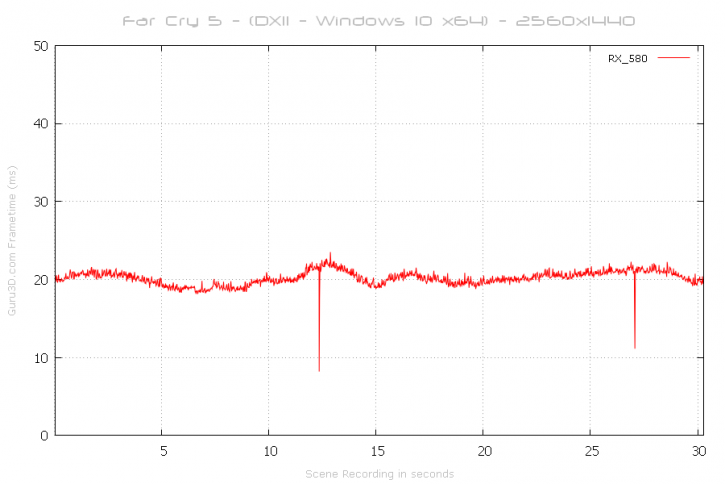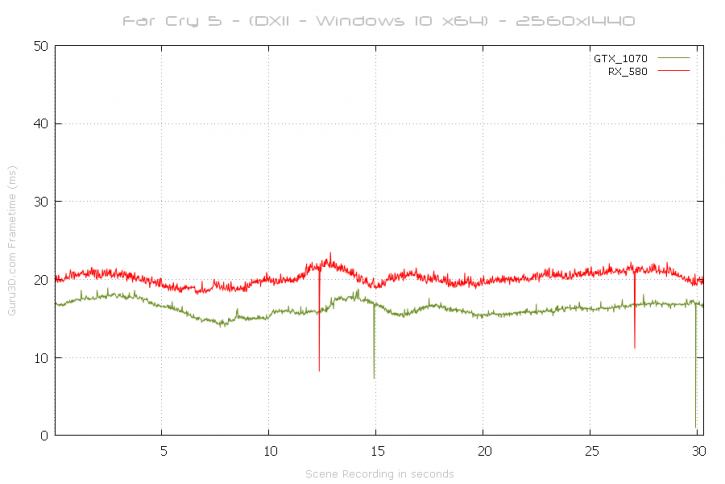FCAT Frame Analysis
Frametime and latency performance
With FCAT we will look into Frame Experience Analysis. Basically with the charts shown we are trying to show you graphics anomalies like stutters and glitches in a plotted chart. There has been a measurement introduced, latency measurements. Basically, it is the opposite of FPS.
- FPS mostly measures performance, the number of frames rendered per passing second.
- Frametime AKA Frame Experience recordings mostly measures and expose anomalies - here we look at how long it takes to render one frame. Measure that chronologically and you can see anomalies like peaks and dips in a plotted chart, indicating something could be off.
| Frame time in milliseconds |
FPS |
| 8.3 | 120 |
| 15 | 66 |
| 20 | 50 |
| 25 | 40 |
| 30 | 33 |
| 50 | 20 |
| 70 | 14 |
We have a detailed article (read here) on the new FCAT methodology used, and it also explains why we do not use FRAPS anymore. Frametime - Basically the time it takes to render one frame can be monitored and tagged with a number, this is latency. One frame can take say 17 ms. Higher latency can indicate a slow framerate, and weird latency spikes indicate a stutter, jitter, twitches; basically, anomalies that are visible on your monitor.
What Do These Measurements Show?
What these measurements show are anomalies like small glitches and stutters that you can sometimes (and please do read that well, sometimes) see on screen. Below I'd like to run through a couple of titles with you. Bear in mind that Average FPS often matters more than frame-time measurements.
For this interested, in the above video, you can see the benchmark recording, each frame rendered gets a color label so that we can analyze the scene tested. Each recorded run is 30 seconds precisely.
Above a percentile chart, this plot is a 31-second recording @ 2560x1440. Here we plot relative FPS and place it in relation to percentiles. The more level a level and 'flat' line basically means that a lot of frames are in the same framerate region, this is looking pretty solid and similar for both brands.
50% of the time measured frames is the average framerate (higher = better). Today we'll use a Radeon RX 580 and a GeForce GTX 1070.
With frametime chart, lower = better. Huge spikes above 40 ms to 50 ms can be considered a problem like a stutter or (if consistent) indicate a low framerate. Other than two drops, the frametimes looks very good overall.
For the Radeon, we also see the very similar behavior. Our run also exhibits two framedrops. Overall pacing looks pretty good, the line is a bit thicker, meaning that inter fame pacing is a tiny bit wider compared to the GTX 1070, but overall, this is totally fine really. Let's overlay the two:
Combined with an overlay, the cards both do look fairly similar towards each other aside from some lower latency for the faster GTX 1070. For both, we see two framedrops. Other than that, that's pretty much what you like to see as far as frame pacing and frametimes go.





